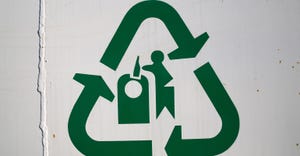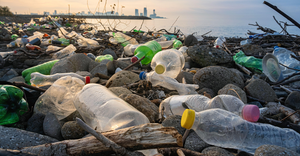Some of these technologies help prolong shelf life; others may facilitate upcycling of byproducts or imperfect looking produce.
About 40 percent of would-be usable food is wasted in the United States, ending up mainly in landfills and resulting in both environmental and societal costs. Stakeholders trying to address these problems face barriers, tied largely to funding and infrastructure.
Now, new innovations are providing economic opportunities for stakeholders all along the supply chain, as well as entrepreneurs. And partnerships are beginning to evolve between industry and government to address the issues.
This early work is focused on three goals, outlined on the U.S. Environmental Protection Agency’s (EPA’s) Food Recovery Hierarchy: preventing food waste in the first place; seeing that wholesome, surplus food gets to those who need it; and recycling what is unfit for human consumption for other uses.
The United States Department of Agriculture (USDA) puts most of its efforts at the top of the hierarchy: preventing food waste.
“That’s where we have ultimate resource efficiency. And it fits in USDA's mandate to help ensure that farmers get value from everything they harvest, to create economic opportunities in rural communities and to expand the supply of nutritious, wholesome foods,” says Elise Golan, director for sustainable development, office of the chief economist, USDA. Golan will speak at a session called Solutions to Food Loss, Waste, and Recovery; Organics Infrastructure Needs, Financing and Development, as part of the Composting & Organics Recycling Conference and Food Recovery Forum at WasteExpo on Monday, May 8 at 9 AM in New Orleans.
USDA’s Agricultural Research Service (ARS) supports innovation, often in collaboration with industry and academic partners. ARS has provided loans to startups to take ideas from research and development to commercialization that address food waste across the agriculture supply chain.
Some of these technologies help prolong shelf life; others may facilitate upcycling of byproducts or imperfect looking produce.
One example is WholeVine products, sourced from California wine vineyards. What once was used for compost will be processed to retain, and make use of, its nutritional value.
“When you grow grapes for wine you have seeds left … what do you do with them? One of our USDA labs helped develop a technology to create nutritious flour with seeds,” Golan says. “The flour is used in cookies and snack bars. So you have created economic opportunities for producers and they are able to salvage what they would have had to throw away, plus you have a nutritional product.”
Another innovation developed in a USDA lab turned ugly produce, grown by Pacific Northwest Orchards, into natural fruit bars.
While the internationally marketed bars are made from fresh fruit, they are processed in way to extend shelf life, and are cheaper and easier to transport as they are not weighted with water.
Other USDA programs range from those to measure and prevent plate waste in schools, to a low-cost loan for on-farm storage facilities. Since 2000, the loan program has disbursed $2 billion to farmers.
Not all food can be salvaged for human consumption, however.
Harvest Power, an organics management company, leverages composting and anaerobic digestion to turn organic waste into commodities.
“Some food waste can be handled responsibly through traditional composting, mixing it with green waste,” says Chris Kasper, president and CEO of Harvest Power. “But you can’t responsibly compost more than 20 percent of food waste in the mix and there is far too much of it. The math does not work, so we need a new solution.”
Kasper will also speak at WasteExpo.
Anaerobic digestion is a proven technology and potential solution. But leveraging it to address the problem on a large scale would require billions of dollars in infrastructure investment.
“The question becomes, what can be done to create an economic environment to facilitate a large-scale infrastructure build?” Kasper says. “I think there needs to be greater coordination between the private and public sectors. Currently the public is looking for private capital to fund the solution, but there need to be certain market conditions to justify the investment. One anaerobic digestion facility can cost $50 million.”
He believes community and government partnerships could facilitate more systems to appreciate the value of would-be waste. For example, making it easier to get a fuel product into the pipeline. Or public-private partnerships to support composting, like subsidies or financial incentives for farmers.
“These issues [tied to massive volumes of food waste] are a huge societal problem, and one that progressive communities are starting to tackle. Both the public and private sectors need to play a role in solving this important challenge,” says Kasper.
About the Author(s)
You May Also Like




